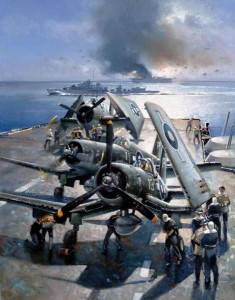Naval History Magazine, January 2013
After more than five exhausting years of global conflict, the British Commonwealth organized a powerful modern fleet that fought as equal partners with the U.S. Navy in the late stages of the Pacific war.
For the Royal Navy, the end seemed to come quickly in the Pacific war. Less than three days after the conflict’s outbreak, Japanese aircraft attacked and sank the most powerful British warships in Far Eastern waters, the modern battleship Prince of Wales and the battlecruiser Repulse . Their loss, followed within a couple of months by the capture of the naval bases in Hong Kong and Singapore, effectively drove the British navy out of the Pacific.
But the Royal Navy—in the form of the British Pacific Fleet (BPF)—returned to make a major contribution in 1945 to the defeat of Japan. The BPF, its vital bases, and logistical support organization did not exist until late 1944, but eight months later, the fleet had become the most powerful deployed force in the history of the Royal Navy.
The BPF did not begin to come into focus until the August 1943 Quadrant Conference of Allied leaders in Quebec. Agreement was reached that greater priority should be given to the Pacific war, while retaining the “Germany first” principle. But for much of 1944, Prime Minister Winston Churchill and the British Chiefs of Staff argued over how best to implement the decisions.





